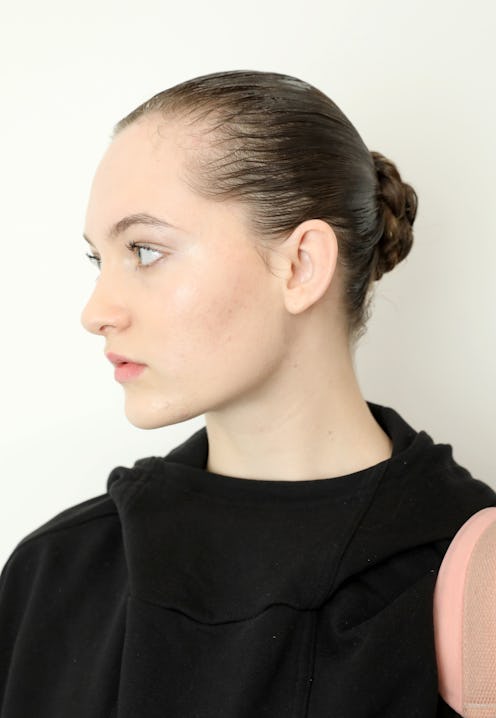(Beauty)
This Is Why You Should Be Using Neck Care Products Every Day

I'll be the first to admit that I fully neglect treating my neck. While I go the whole nine yards when it comes to caring for my face — cleanse, mask, tone, apply serum, moisturize, dab on eye cream — I never work in any formulas below my jawline. That was until I noticed an influx of neck care products cropping up in the new arrivals section on retailer sites like Sephora and Dermstore. Now, like so many, I'm starting to realize that addressing your neck is equally as vital as the rest of your body.
Cosmetic dermatologist Dr. Michele Green says the skin around your neck is thinner than most parts of your body. "In addition, it loses its elasticity sooner resulting in sagging and crepiness as you get older," she says. Furthermore, the dermatologist notes that your neck also has different collagen content, making it especially prone to the wear and tear of aging.
Sure, you can apply your face products to your neck, however, you might want to consider serums and creams specifically created for this part of your body. "The formulations in neck products may be gentler than face products, especially when it comes to ingredients that can potentially be irritating like retinol," Dr. Marie Hayag, a board certified dermatologist and founder of 5th Avenue Aesthetics in New York City, tells TZR. And Dr. Green says neck creams are restorative and designed for the skin on your neck. "They are usually formulated to address the specific concerns of the neck such as crepiness and loss of elasticity," she explains. "Using the right neck cream will give the skin the nutrients it needs to withstand free radical damage and premature aging."
Just like your face, you can apply both a serum and cream to your neck. "Neck serums, like facial serums, are often concentrated with a high dose of active ingredients," Dr. Y. Claire Chang, a board certified cosmetic dermatologist at Union Square Laser Dermatology in New York City, tells TZR. She says these serums are often formulated with antioxidants, collagen-stimulating ingredients (such as retinols, peptides, glycolic acid, and vitamin C), and hydrating factors (like glycerin, hyaluronic acid, ceramides, and squalene). "Neck serums can help hydrate, brighten, and firm your skin to help it appear more youthful and to prevent further aging," she adds.
And Dr. Ava Shamban, a board certified dermatologist in Los Angeles, says that a neck cream is denser than a serum, and in addition to its more intense moisturizing properties, it also works to strengthen the barrier as well as prevent future moisturize losses. "They can treat environmental aging and correct discoloration, and also help firm and smooth while delivering more intensive hydration," she says. Additionally, she notes that ceramides and peptides are an excellent combination for neck creams. "The neck is thinner and has fewer oil glands than the face, making moisturizing with skin protective ingredients [like ceramides and peptides] even more important," Dr. Chang adds. "Neck creams often have a thicker texture and a higher concentration of moisturizing factors."
Dr. Green confirms that you can use both a neck serum and cream every day. "You can layer your neck treatments by applying a neck serum first and then a neck cream in addition to sunscreen in the morning, and also at bedtime using your neck serum first and then neck cream," she explains.
Consider making one of your New Year's resolutions treating your neck. Ahead, find the dermatologist-approved neck serums and creams to incorporate into your everyday regimen.
We only include products that have been independently selected by The Zoe Report's editorial team. However, we may receive a portion of sales if you purchase a product through a link in this article.
Shop Neck Serums
Shop Neck Creams
This article was originally published on